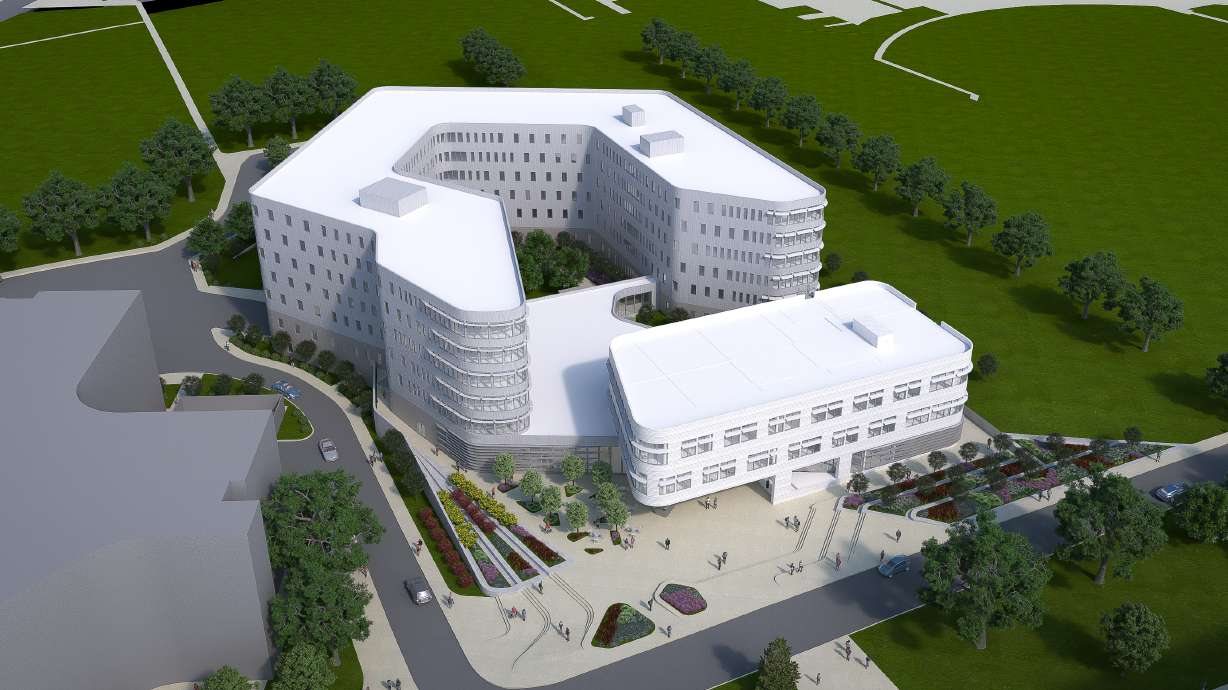Estimated read time: 4-5 minutes
This archived news story is available only for your personal, non-commercial use. Information in the story may be outdated or superseded by additional information. Reading or replaying the story in its archived form does not constitute a republication of the story.
SALT LAKE CITY — University of Utah President Taylor Randall said he wants to "dispel the perception of the U. as a commuter campus" during his inauguration ceremony last month.
He also expressed his desire to increase research ventures at the U., and now a new $114 million building will be a step toward addressing both of those goals.
The David Eccles School of Business last week announced that the Impact and Prosperity Epicenter will break ground this summer. The building — developed based on the concept of Lassonde Studios — will include over 400 residential units that will house 775 students. Additionally, it will have two research centers: the Sorenson Impact Center and the Center for Business, Health and Prosperity.
"The co-location of these activities will provide opportunities for students to find innovative solutions to today's social issues," Randall, who oversaw the planning of the epicenter during his time as dean at the Eccles School, said during his inauguration ceremony.
Steve Alder, professor and executive director at the Center for Business, Health and Prosperity, said that in combining the two research centers under one roof, the hope is to create a global impact "to drive prosperity."
"Great ideas are wonderful, but if they're not implemented, they don't do anybody any good," Alder said. "The epicenter is that place where the resources are made available to take these ideas and get them out into the world."
The six-story building will include a dedicated gathering space on the first floor — known as the Forum — that will serve as the heart of the building. This space will bring together users from the different programmatic areas and from all over campus in an open, collaborative space.
"The Forum then becomes a place where we bring everybody together," Alder said. "The facility then becomes the physical embodiment of bringing together these great minds to create very, very interesting solutions to the problems that impede people from living prosperous lives."
The Center for Business, Health and Prosperity and the Sorenson Impact Center will be located directly above the Forum.

"Even if students can't live there, there are going to be so many opportunities for them to plug into," he said.
The hybrid living-learning community not only brings research and collaboration under one roof, but it also provides a unique living situation for students and will "create an even stronger sense of community and belonging for all," Randall said.
"Demand for on-campus housing is growing, but we want to ensure our students have more than just a place to live," Randall said. "We want to create a living-learning community where students can engage with the transformational work of these centers, gain valuable experience, and use that experience to change the world around them. The epicenter incorporates all elements of our vision to inspire, innovate and impact."
The building will be funded through anchor donations from Jim Sorenson and Robert and Lynette Gay.
"We are excited to be a partner with the university and Jim Sorenson in building this new Impact and Prosperity Epicenter," Bob and Lynette Gay said in a statement. "Through the center, we expect to lay a new innovative foundation within the university that builds and enhances the lives of not only the university's students, but countless others — especially in Africa where we have labored for many years. Building on a mission of unifying the resources of business and public health, we believe the epicenter will become a cutting-edge deliverer led by students of growth, hope and prosperity to today's global community. We are grateful to be part of this new venture."
"The epicenter is a living-learning space that will provide an unparalleled opportunity to equip the next generation of leaders with social purpose and sharpen the world's understanding of impact investing and approaches to sustainable economic development," Sorenson said in a statement. "We believe the outcome of the epicenter will be two-fold — creating the highest learnings and solutions in impact investing and preparing students to be powerful global citizens and community leaders."
At the end of the day, Alder said, he will view the success of the epicenter through the lens of student experience and success. He said he envisions students will leave the epicenter not hoping to gain experience but bringing experience, knowledge and skills gained through the epicenter with them to apply to the world.
"Our impact is what's going to determine how successful we are," Alder said. "If we can get out, build the science, build the understanding, build that knowledge base and then take it to the world and show that it in fact will improve people's lives — that's where the magic is in this, and that really is, at the end of the day, what determines whether we're successful or not."
Construction of the building is expected to begin in June 2022, with a completion date of August 2024. The building will sit on a currently empty site to the east of the University's Lassonde Studios.










